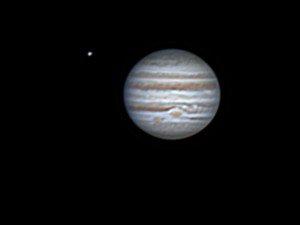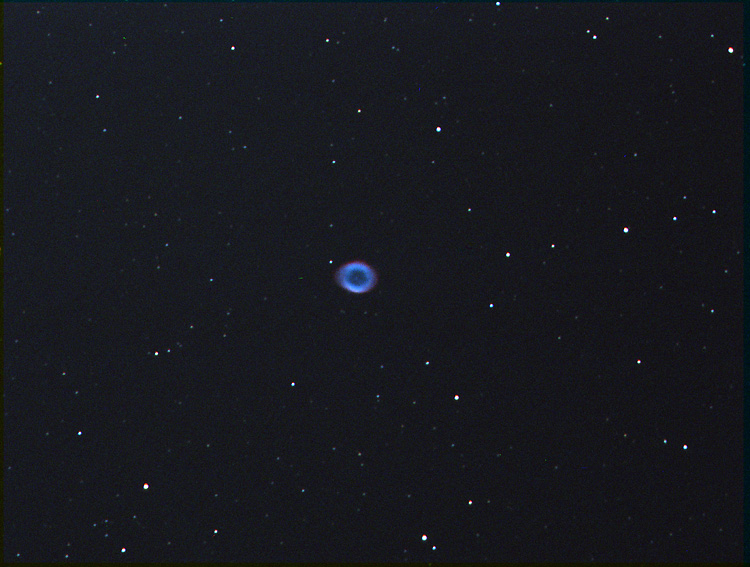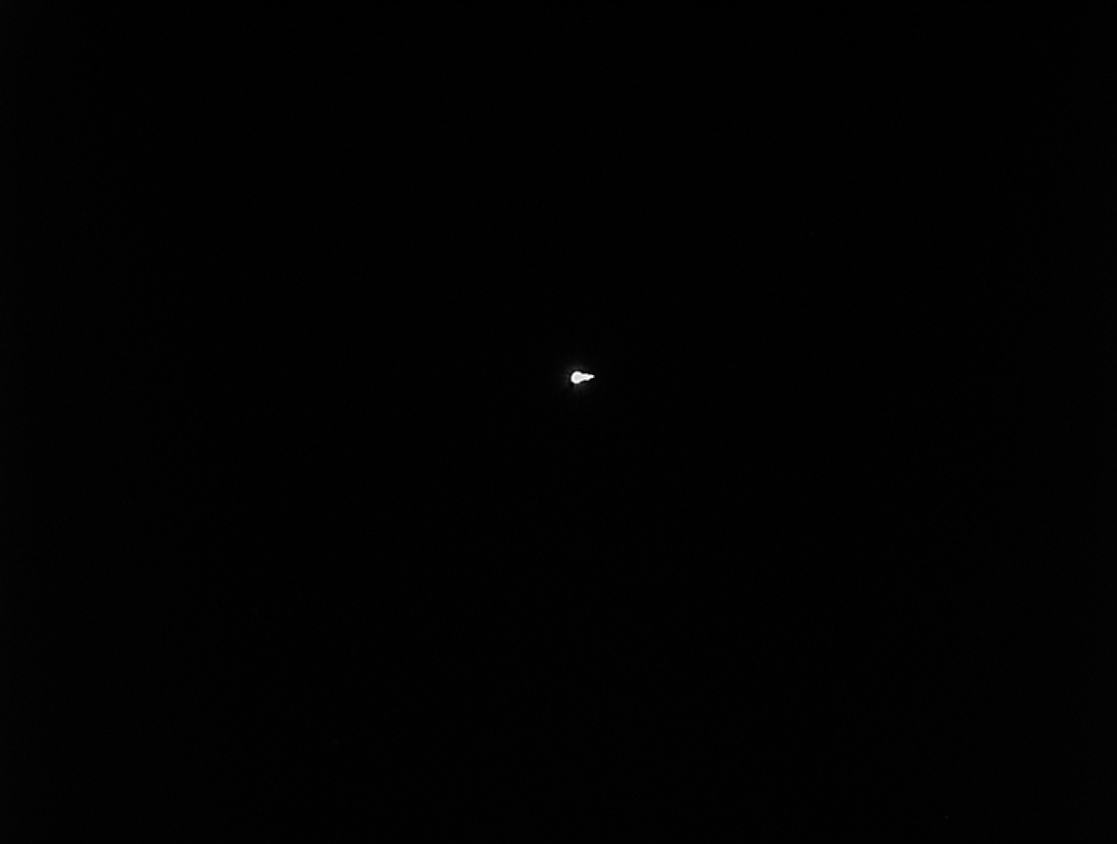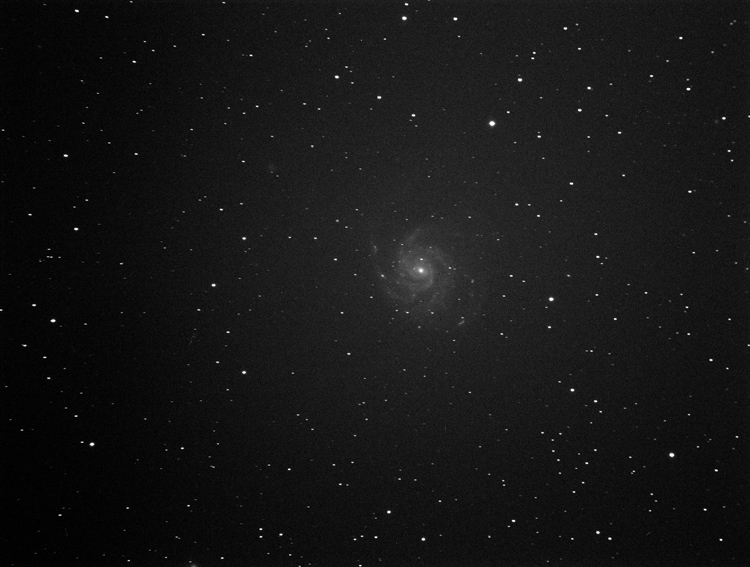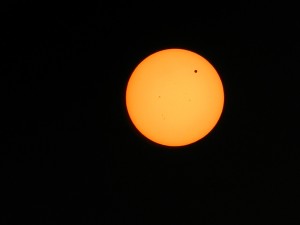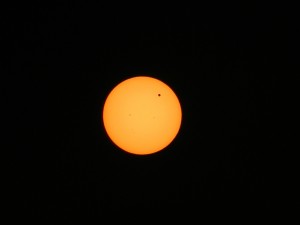
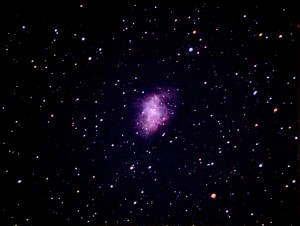
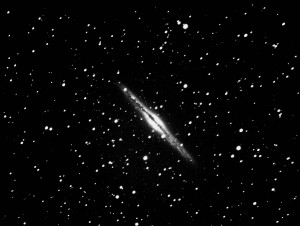 Jared Cassidy provided the 8 inch f/10 Schmidt Cassegrain and atlas mount to aide Jeff Delmas in obtaining the two color and one black and white shot, M42 and M43, the great Orion Nebula in the sword of Orion, and the Crab Nebula near the tip of one of Taurus the Bull’s Horns were captured in color, and NGC 891, the edge on galaxy in Andromeda was captured in black and white. Jeff Delmas operated the SBIG CCD camera and Frank Schenck and Jeff Delmas did the image processing with SBIG software.
Jared Cassidy provided the 8 inch f/10 Schmidt Cassegrain and atlas mount to aide Jeff Delmas in obtaining the two color and one black and white shot, M42 and M43, the great Orion Nebula in the sword of Orion, and the Crab Nebula near the tip of one of Taurus the Bull’s Horns were captured in color, and NGC 891, the edge on galaxy in Andromeda was captured in black and white. Jeff Delmas operated the SBIG CCD camera and Frank Schenck and Jeff Delmas did the image processing with SBIG software.
 Jeff Delmas images and processes Barnard 33, The Famous “Horse Head” Nebula just off of Alnitak in Orion’s Belt in color and the nebula that surrounds it IC 434 with 21 inch f/4 Newtonian Reflector and the SBIG CCD camera and processed it with SBIG software.
Jeff Delmas images and processes Barnard 33, The Famous “Horse Head” Nebula just off of Alnitak in Orion’s Belt in color and the nebula that surrounds it IC 434 with 21 inch f/4 Newtonian Reflector and the SBIG CCD camera and processed it with SBIG software.
Frank Schenck also captured this picture of Ganymede and Jupiter with the Celestron 16 inch f/11.25 Schmidt Cassegrain Reflector with his planetary video camera and processed with Registax 6.
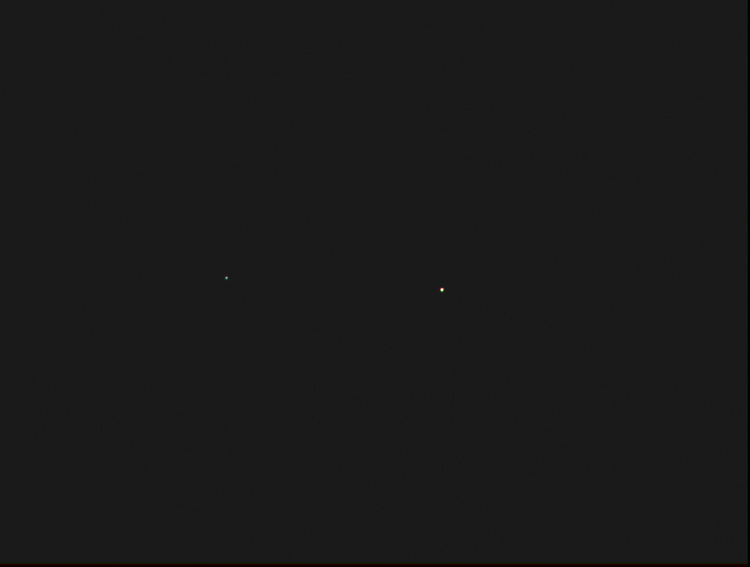
The First Color Picture is Messier 57, the Ring Nebula in Lyra, color made with the SBIG camera and SBIG RGB combine software, operated by Doug Horacek; the second photo is of Albireo the Blue and Gold Double Star at the head of Cygnus the Swan (comment, add Double Stars as a section on the BLOG), the color photograph captured by the SBIG camera and processed with SBIG RGB combine software, operated by Doug Horacek. The Black and White Antares and its White Dwarf Companion Picture was processed by Doug Horacek using Hard Planetary Smooth, Hard Planetary Sharpen, and DDP filter utilities from the SBIG software. John Callahan and Frank Schenck assited in image processing. Jeff Delmas did the photography on the evening of 6 July 2012 with the SBIG camera and Jared Cassidy’s eight inch f/10 Schmidt Cassegrain, a Meade telescope on an Orion Atlas Mount.
Here are two more images taken with John Callahan’s 4 1/2 inch refractor and our new SBIG camera, these are black and white raw images taken by Jeff Delmas. The top picture is the Veil Nebula, NGC 6960, the southwest branch and star 24 Cygnii in Cygnus the Swan or the “Northern Cross”. The Bottom Picture is Messier 101 the Pinwheel Galaxy in Ursa Major the “Big Bear” or “Big Dipper”.
From the International Dark-Sky Association:
PBS Documentary ‘The City Dark’ Explores
Problems of Light Pollution
04 July 2012. TUCSON, AZ – Beginning 5 July 2012 the Public Broadcasting Service
will start airing The City Dark, a documentary that explores the problems of light
pollution and the disappearance of stars from the night sky.
For nearly two and a half decades the International Dark-Sky Association (IDA) has
been working to sound the alarm concerning many of the issues brought up in the
film while advocating for greater controls of nighttime lighting. IDA Executive
Director Bob Parks says, “We are delighted to see Ian Cheneyʼs film get a national
stage and hope that, before too much longer, many of the issues raised in the film
will be behind us. The good news is that with awareness, light pollution is an easy
problem to solve.”
Astronomy, ecology, human health, crime and economics are some of the topics
explored in the film which follows filmmaker Ian Cheneyʼs personal exploration of the
impact of light at night as he asks “Do we need the dark?” The film covers various
aspects of light at night and features noted experts in their respective fields including
astrophysicist Neil deGrasse Tyson, writer Timothy Ferris, cancer researcher David
Blask, and many more.
Director Ian Cheney says, “We are thrilled to present The City Dark on PBS’
amazing series POV, and what better week to air than the week of July 4th; perhaps
the fireworks can serve as a reminder of all that glitters in an unpolluted starry sky,
and encourage us all to do what we can to protect the night. We are indebted to our
partners like the International Dark Sky Association for taking the lead in combating
wasteful night pollution, and grateful for our viewers for tuning in and enjoying the
film!”
For more on the film, to check local TV listings and to explore background
information on the topic, visit the PBS website http://www.pbs.org/pov/citydark/. The
PBS POV website will be streaming (in the U.S. only) the film online.
The International Dark-Sky Association, a non-profit 501(c)3 organization, was
founded in 1988 to promote environmentally responsible outdoor lighting and the
preservation of the night sky. IDA educates communities and individuals to use only
the amount of outdoor lighting necessary, only when necessary and to direct it to the
ground where it is needed. Among its efforts, the organization provides information
brochures, workshops, a model lighting ordinance, manages a night sky
conservation program, and awards the distinguished IDA Fixture Seal of Approval to
applicants with lighting fixtures that are dark-sky friendly.
Saturday evening starting after program and regular observing 10 P.M. until 2:00 A.M., 11-12 August (peak evening according to Sky & Telescope, note change of date), at the VBAS field watch the Persied Meteor Shower, the Moon will be a waning crescent, estimated between 110 and 90 meteors per hour, a great evening for observing meteors given the weather holds. Come join us for a great display of the bright Persied Meteor Shower.
Target Date: Tuesday evening, 14 August, Saturn, Mars, and Spica conjunction – call Doug Horacek at 256 772-6788 will serve pizza and root beer at Doug’s Condo. Bring binoculars and scopes with a wide field of view – will start at 6:00 P.M. to set up. Event happens at dusk and a little beyond. Alternate bad viewing dates due to weather are Monday evening 13 August, or Wednesday evening 15 August.
Target Date: Tuesday evening, 21 August, Grouping of Saturn, Mars, Spica, and the Moon at the Space and Rocket Center, event occurs at dusk and a little beyond, stay posted for more details.
Early Notice: For early risers, the Beehive Cluster (M44), Venus and the Moon will be very close together in the sky at around 4:00 A.M. on the morning of 12 September, Wednesday Morning, the only morning this happens, well worth getting up to see.
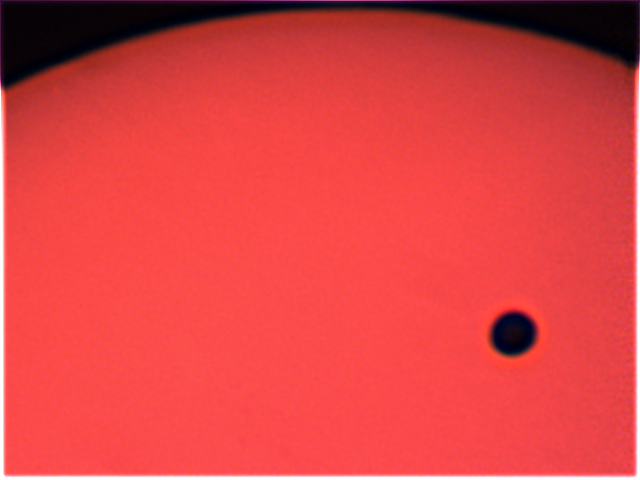
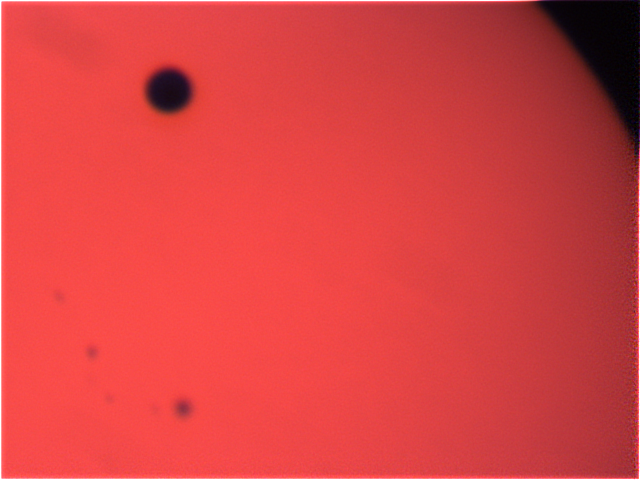
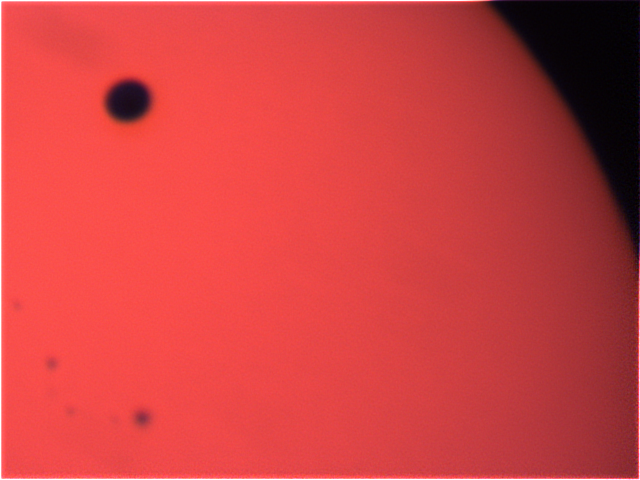
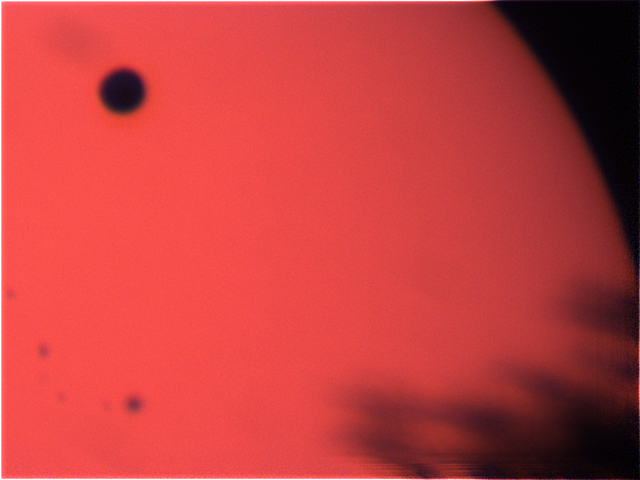
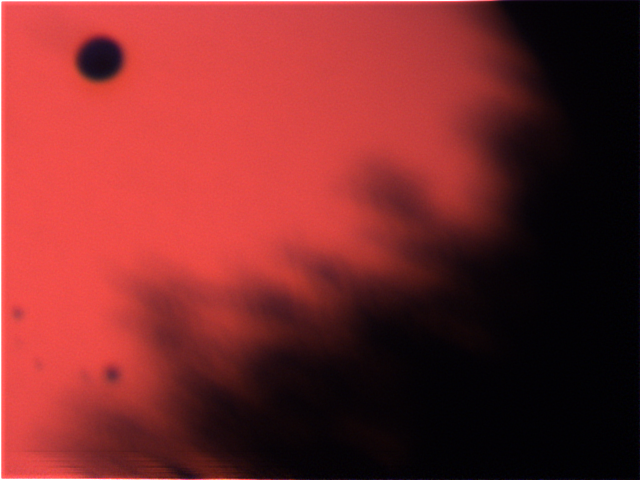 Frank Schenk captured some video of the Venus Transit betwee 19:40 and 19:45 CDT, 0:40 and 0:45 on the 6 June 2012 UT caught Venus near a Sun Spot Group Cantina 68, sunspot number is from the Cantina Obseratory in Italy, no NOAA number was referenced the next day. Frank obtained this shot with Doug Horacek’s 3.5 inch 90mm Orion Refractor, Doug moved the scope Frank took the video. These pictures were obtained just before the Sun set.
Frank Schenk captured some video of the Venus Transit betwee 19:40 and 19:45 CDT, 0:40 and 0:45 on the 6 June 2012 UT caught Venus near a Sun Spot Group Cantina 68, sunspot number is from the Cantina Obseratory in Italy, no NOAA number was referenced the next day. Frank obtained this shot with Doug Horacek’s 3.5 inch 90mm Orion Refractor, Doug moved the scope Frank took the video. These pictures were obtained just before the Sun set.
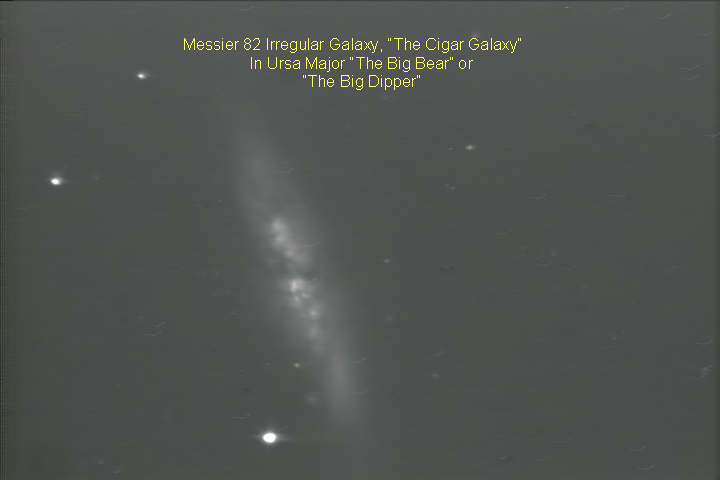 This is a photograph of Messier 82, the “Cigar Galaxy”, the irregular galaxy in Ursa Major or “The Big Bear”, also the “Big Dipper” taken with the Swanson 21 inch by Jeff Delmas who did the video and Doug Horacek did the post processing. The video was obtained with the Stellacam II with 8 seconds per frame. Taken on the evening of 28 April 2012 at 22:00 CDT or 3:00 U.T. on 29 April 2012.
This is a photograph of Messier 82, the “Cigar Galaxy”, the irregular galaxy in Ursa Major or “The Big Bear”, also the “Big Dipper” taken with the Swanson 21 inch by Jeff Delmas who did the video and Doug Horacek did the post processing. The video was obtained with the Stellacam II with 8 seconds per frame. Taken on the evening of 28 April 2012 at 22:00 CDT or 3:00 U.T. on 29 April 2012.
